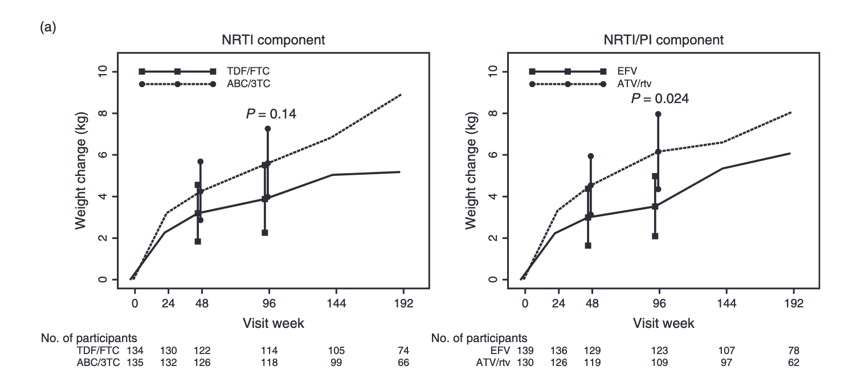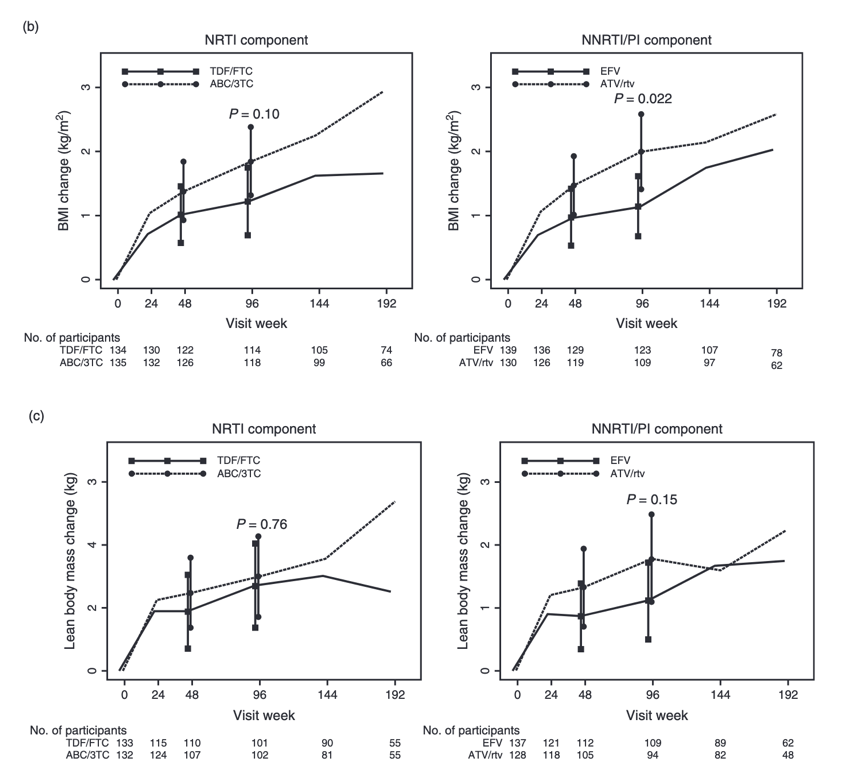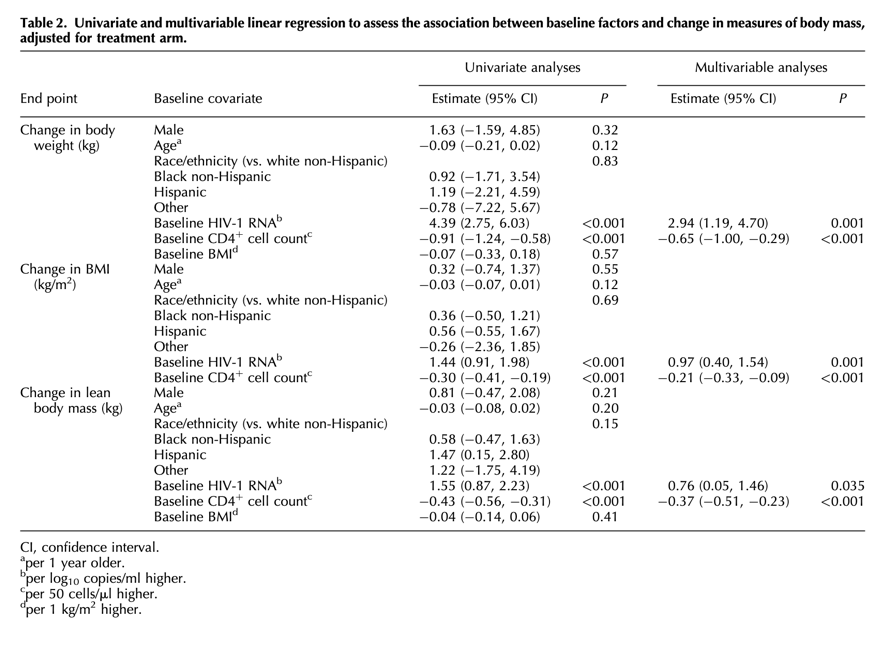| |
Weight Increases with Reyataz & Efavirenz in Treatment-Naives A5202
|
| |
| |
Download the PDF here
A5224s was a sub-study of A5202, a prospective trial of 1857 ART-naive participants randomized to blinded
abacavir-lamivudine (ABC/3TC) or tenofovir DF-emtricitabine (TDF/FTC) with open-label efavirenz (EFV) or atazanavir-ritonavir (ATV/r).
Among all participants, weight increased from baseline by a mean of 4.8 kg at week 96 (P < 0.001). The mean changes in weight for each study arm are shown in Fig. 1a.
our study shows that assignment to ATV/r leads to greater gain in body weight and BMI than EFV.
higher baseline HIV-1 RNA level and lower CD4+ cell count were associated with a greater gain in total body mass, BMI
Fig. 1. Absolute changes in total weight, BMI, and lean body mass by treatment arms.Mean and 95% confidence intervals arerepresented by symbols and error bars;P-value from comparison between arms at 96 weeks; TDF/FTC, tenofovir-emtricitabine;ABC/3TC, abacavir-lamivudine; EFV, efavirenz; ATV/r, atazanavir-ritonavir. (a) Changes in total weight between the nucleosidereverse transcriptase inhibitor (NRTI) and nonnucleoside reverse transcriptase inhibitor/protease inhibitor (NNRTI/PI) com-ponents. (b) Changes in BMI between NRTI and NNRTI/PI components. (c) Changes in lean body mass between NRTI and NNRTI/PI components.


Weight and lean body mass change with antiretroviral initiation and impact on bone mineral density
Change in weight
Among all participants, weight increased from baseline by a mean of 4.8 kg at week 96 (P < 0.001). The mean changes in weight for each study arm are shown in Fig. 1a. Although ABC/3TC had a trend towards greater weight gain compared with TDF/FTC by intent-to-treat analyses at week 96, this difference was not statistically significant (Fig. 1a). Results in the as-treated analysis were similar [∇ = 1.43 kg; 95% confidence interval (CI) -0.97, 3.83 kg; P = 0.24]. ATV/r assignment resulted in significantly greater weight gain in both intent-to-treat (Fig. 1a) and as-treated analyses (∇ = 3.34 kg; 95% CI 0.97, 5.71 kg; P = 0.006) compared with EFV.
Change in BMI
Among all participants, BMI increased by a mean of 1.5 kg/m2 at week 96 (P < 0.001). The mean changes in BMI across study arms are shown in Fig. 1b. No significant differences in BMI were detected between ABC/3TC and TDF/FTC by intent-to-treat (Fig. 1b) or as-treated analyses (∇ = 0.53 kg/m2; 95% CI -0.25, 1.31 kg/m2; P = 0.18). Participants randomized to ATV/r experienced a 0.88 kg/m2 greater increase in BMI compared with EFV in the intent-to-treat analysis (Fig. 1b). BMI increase was also higher in the ATV/r compared with EFV by as-treated analysis (∇ = 1.08; 95% CI 0.31, 1.86 kg/m2; P = 0.007).
Baseline associations with change in total body mass, BMI, and lean body mass
In both univariate and multivariable analyses of variables associated with body composition change, higher baseline HIV-1 RNA level and lower CD4+ cell count were associated with a greater gain in total body mass, BMI, and LBM at week 96 after adjusting for treatment arm (Table 2).

|
|
| |
| |
|
|
|